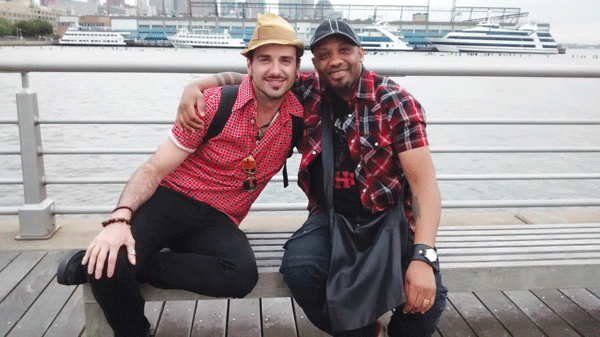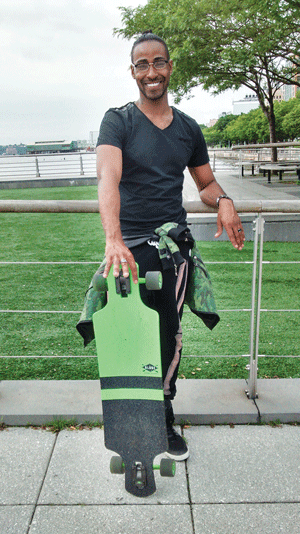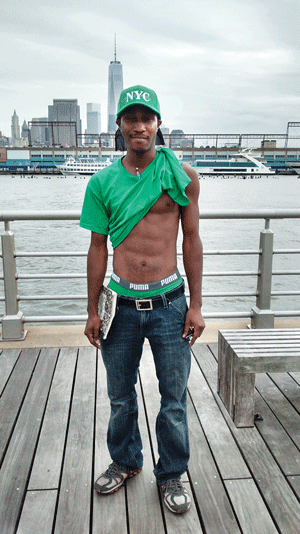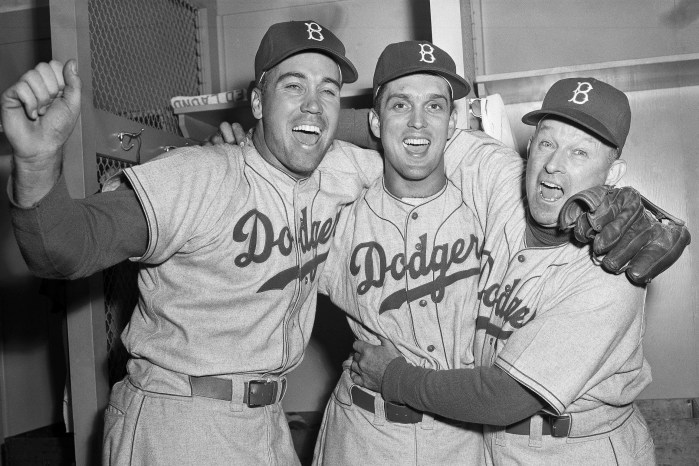

BY CLARISSA-JAN LIM | Since the Stonewall riots, the Christopher St. Pier has been vital to local L.G.B.T. youth, as a place to find acceptance and a safe refuge — often from their own homes.
Once renowned for its bohemian artists and gay culture, the West Village has transformed into a hip, upscale neighborhood peppered with designer thrift stores and restaurants, whose quaint décor masks its clientele’s deep pockets.
Like the rest of the neighborhood, the pier itself is no stranger to gentrification.
Devon McDowell, a 48-year-old product developer, has been a Christopher St. Pier regular since he first came out. He said the upside of the neighborhood’s upscaling is that the waterfront has greatly improved, at least aesthetically.
“It’s nice, it’s beautiful,” he said. “It’s somewhat nostalgic for me because the first time I came here was in 1984. Before, it was all broken down. There was another pier that was ripped out. From 1984 till now, it’s a new face — way improved.”
For today’s L.G.B.T. youth, the pier still holds a special place in their hearts. Sabree Miller, 24, goes there when he wants to clear his mind and write music.
“It’s a good, quiet place for me to relax,” he said.
When he was homeless at 17, the student and musician slept in the bushes by the pier for two years.
However, the crowd has also changed quite a bit, said McDowell, who was there with Salvadore Lopez, 42, a piergoer since the ’90s.
“It used to be a little more raunchy, a little more dirty, a little more gay,” said Lopez, who hails from Spain. “Now that ‘gay’ is more included in society, I feel there’s no need for a gay place anymore because it’s more everywhere. They can be gay in their own environment now, so this is more like a park.”
Brian, a 32-year-old acrobat who withheld his last name for privacy reasons, agreed the place has gotten a lot nicer.
Gesturing toward the pier’s real grass lawn, he said, “There’s a crowd of children over there, instead of a throng of gay men having sex, so it’s changed dramatically.”
Yet, McDowell and Lopez see today’s L.G.B.T. pier youth as different from the way they used to be. Branding them somewhat “out of control,” McDowell said the youth are more defiant and mischievous, causing problems for the local residents.
“I’ve noticed the kids when you come down here, they’re always arguing,” he said. “I don’t know, sometimes I get a little afraid to come down here because you don’t want to confront them; they’re like little groups of street gangs.”
Miguel P., a general assistant at Housing Works, came face to face with the seeming risks the youth pose to the community at large. Just the night before, Miguel, who is involved in outreach efforts at the pier, was robbed by a group of teenagers.
“Some of the younger minorities have nowhere to go,” he said. “They have been pushed away from home or they don’t feel comfortable at home, so they come here. But being that they have left home, they don’t know how to act and it makes it a little unsettling. I don’t like the young crowd. I’m just not sure what they’re into anymore… . I didn’t expect to be robbed by a community that I’m constantly trying to help.”
 The change in young people’s attitude is partly because the concept of “being gay” has also altered over the decades, Lopez offered.
The change in young people’s attitude is partly because the concept of “being gay” has also altered over the decades, Lopez offered.
“I think gayness before used to be a little bit more political,” he said. “We had more, like, things we’re going to achieve. Now everybody’s gay, but they don’t really know what’s happening, what it means. It’s a little more diluted.”
The Village’s increasingly wealthy and family-oriented residential community represents a vast shift from its grittier bohemian roots as the birthplace of the Beat generation. Back then, the Village was populated by artists, musicians, writers and others who lived on the edgier fringe of New York society.
Today, the area’s denizens are “boring” and “conservative” by comparison, said McDowell.
“It’s just people with money, and they want to be by the water,” he said.
Lopez agreed, adding that gentrification and skyrocketing property values were not merely confined to the Village.
“Everything has been taken by people with money; there’s no middle class anymore,” he said. “The whole New York is like that.”
The demographic changes have led to some strife between residents and the L.G.B.T. youth who hang out in the area. Residents have complained about the noise level at the pier in the wee morning hours, and in recent years have tried to set an earlier, 10 p.m. curfew. However, the curfew for the whole Hudson River Park remains 1 a.m. On the other hand, gay youth advocates have called for lifting the curfew entirely to create a 24-hour pier.
Miller said some residents are less L.G.B.T. friendly than others.
“I think they think we are all loud,” he said of the pier youth. “People have complained about the noise here before, but there’s nothing really they can do — it’s a park. I hope that they do keep the park open because a lot of people come here and find comfort here.”
Brian said that the tension between residents and L.G.B.T. youth is simply due to the latter being rowdy late at night.
“When you have people screaming outside your window, of course, you’re not happy about it,” he said. “Sometimes I think it’s really that simple. It’s not this deep-seated homophobia where they’re coming out and trying to beat young, queer people because they’re out on the street — it’s just really because they’re bothering them.”
“I could imagine,” McDowell said, “for all those people who come down here and live down here, they’re spending so much money. They don’t want to deal with that stuff.”
Some things will remain the same, though, Lopez and McDowell pointed out. In the summer, Christopher St. pier is like the “gay beach,” they said, because of the flock of sunbathing men who stretch out on the grass.
“On a hot summer day,” McDowell said, “you come down here — bodies of men. The guys are pretty much naked.”
Lopez said once the families see that, they turn around, pushing their high-end strollers away to the next pier, their perfectly groomed puppies in tow.
















